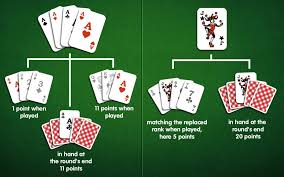How Do You Play Rummy, is a popular card game that blends skill, strategy, and a bit of luck, making it a favorite among players of all ages. Whether played casually with friends or in competitive settings, the objective remains the same: form valid sets and sequences to win the game. This article will provide a comprehensive guide on how to play rummy, including the rules, gameplay, and strategies to enhance your skills.
Objective of the Game
The primary goal in rummy is to arrange your cards into valid combinations before your opponents do. These combinations consist of:
- Sets: A set contains three or four cards of the same rank but different suits (e.g., 7♥, 7♣, 7♦).
- Sequences: A sequence consists of three or more consecutive cards of the same suit (e.g., 4♠, 5♠, 6♠).
Basic Rules of Rummy
1. Number of Players
Rummy can be played by 2 to 6 players, making it versatile for both small and larger groups.
2. Deck of Cards
The game is typically played with a standard 52-card deck. For games with more than 4 players, a second deck may be added.
3. Dealing the Cards
- Each player is dealt a specific number of cards, usually 10 for 2 players or 7 for 3 or more players.
- The remaining cards form the draw pile, with the top card placed face-up to start the discard pile.
4. Gameplay Structure
- Taking Turns: Players take turns in a clockwise direction. During a turn, a player must:
- Draw a card from either the draw pile or the discard pile.
- Form sets and sequences, if possible.
- Discard one card to end their turn.
- Going Out: A player can go out if all their cards are arranged in valid sets and sequences. They must discard one final card to end the game.
5. Winning the Game
The player who successfully arranges all their cards into valid combinations and discards their last card is declared the winner. Points can be calculated based on the remaining cards in other players’ hands if playing for stakes.
Strategies for Playing Rummy
1. Pay Attention to Opponents
Observing which cards your opponents pick and discard can provide insights into their strategies. This information can help you decide which cards to keep or discard.
2. Formulate Your Sets Early
Aim to create valid sets and sequences as soon as possible. This proactive approach can prevent you from holding onto high-point cards that could cost you the game if another player goes out.
3. Manage Your Hand
Keep track of the cards in your hand and those that have been played. This can help you anticipate potential combinations and make informed decisions about what to keep or discard.
4. Use Wild Cards Wisely
In some rummy variants, wild cards can substitute for any card. Utilize these effectively to complete sets or sequences, but be mindful of holding onto them for too long.
5. Practice Makes Perfect
The more you play, the better you’ll become. Familiarize yourself with different strategies and adapt your gameplay based on your experiences.
Variations of Rummy
Rummy comes in several variations, each with its own set of rules:
- Gin Rummy: A two-player version with a focus on forming melds before your opponent does.
- Indian Rummy: Typically played with two decks and involves two jokers; players must create at least two sequences, one of which must be a pure sequence (without a joker).
- Kalooki Rummy: Involves a higher number of cards and often uses wild cards.
Conclusion
Playing rummy is a rewarding and enjoyable experience that combines strategy, observation, and a bit of luck. By understanding the rules and applying effective strategies, you can enhance your gameplay and increase your chances of winning. So gather your friends, shuffle the deck, and dive into the thrilling world of rummy! Happy playing.




